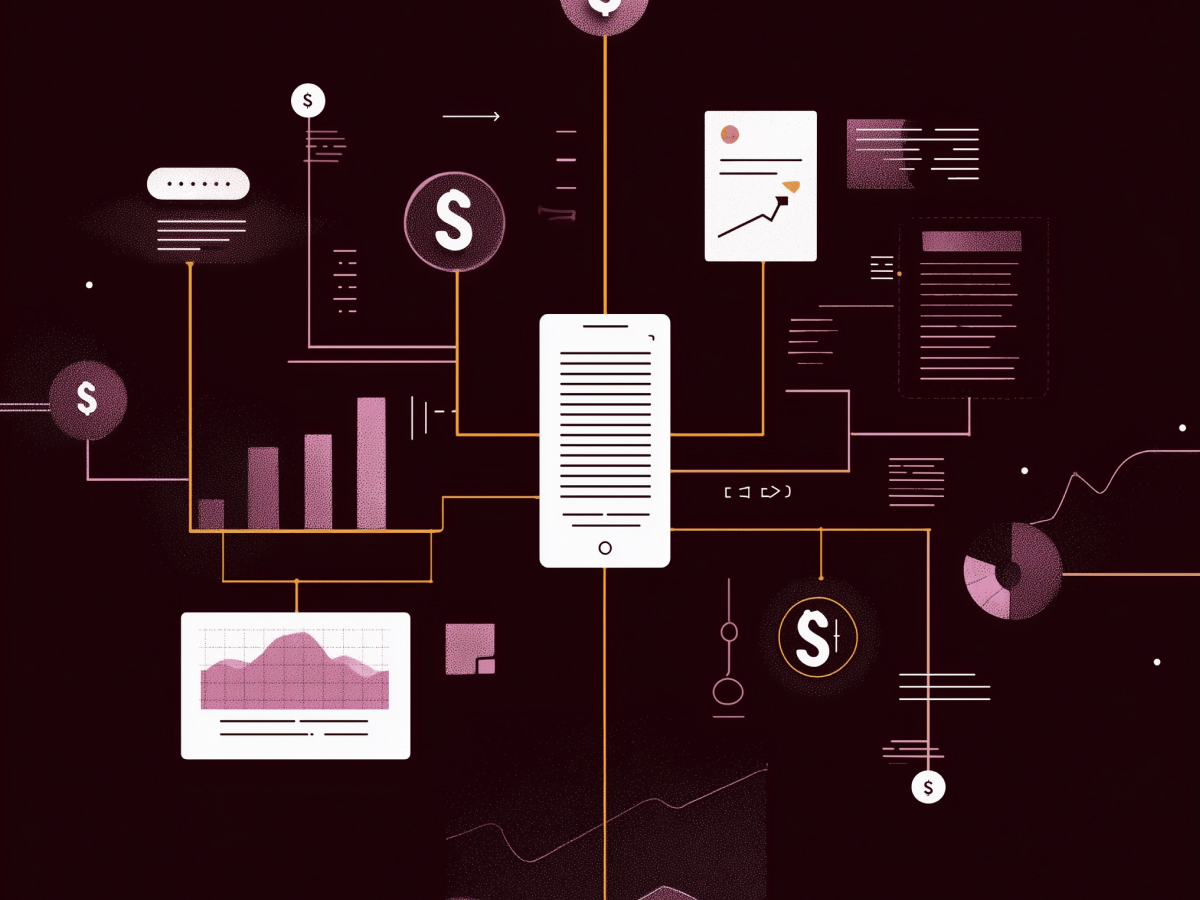Software capitalization as a tool for engineering leadership
For engineering leaders, software capitalization is a practical tool to steer their teams, resources, and strategies toward maximum impact. Recording software development costs as assets (rather than lumping them into expenses) provides a structured way to manage investments that are fueling innovation. Think of it as turning raw effort into tangible, long-term value.
When you capitalize on software development, you’re creating a bridge between engineering efforts and financial insights. Spreading costs over time, leadership gains a clearer picture of resource allocation. It’s like having a financial compass pointing you toward smarter staffing decisions, strategic prioritization, and innovation opportunities. Your teams benefit too. With resources thoughtfully managed, developers experience an improved workflow and access to the tools they need to perform at their peak.
It’s worth noting that accounting standards such as ASC 350-40 and ASC 985-20 lay out the groundwork for this practice. These rules define the eligibility of internal and external software costs for capitalization, giving you the blueprint to operate within legal and financial boundaries.
Expensing vs. capitalizing software
The way you account for software development costs has a domino effect on how your company perceives, plans, and executes its initiatives. Expensing is straightforward: costs are recorded within a single period, which works for short-term projects or those with a high chance of failure. But this method can be shortsighted for longer-term ventures.
Capitalization, on the other hand, spreads costs across the useful life of the software. It transforms those expenditures into assets, preserving cash flow and painting a more accurate picture of financial health. For projects rooted in innovation or long-term impact, this can be the difference between superficial cuts and real strategic planning.
“Misclassification is a lurking risk here. Capitalizing something that should have been expensed (or vice versa) can lead to misaligned financial reports.”
Stakeholder trust and compliance are at stake. A key guideline is the “technological feasibility” stage. Only costs incurred during this phase qualify for capitalization, and anything beyond must adhere to strict rules based on whether the software is internal or external.
Benefits of software capitalization for leadership and teams
When done right, software capitalization is a powerful tool for empowering leadership and enriching the work environment for your teams. Reframing development costs as assets, you gain actionable insights that help you prioritize projects with precision. Financial clarity feeds better decisions, whether you’re allocating resources, scaling your team, or deciding which innovations to greenlight.
This method opens doors for resource planning. With more predictable financial models, you can invest in better tools, new hires, or long-term training without second-guessing the budget. Your engineering teams thrive when they’re equipped to innovate and create without constant constraints.
There’s another layer here: the cultural ripple effect. Aligning financial goals with developer needs fosters a work environment that prioritizes creativity and problem-solving. Job satisfaction rises when developers have autonomy, the right resources, and clear alignment with the company’s long-term goals. It’s a win-win, better results for the business and a fulfilling environment for the team.
Internal vs. external software capitalization guidelines
Managing the rules of software capitalization needs precision. Internal and external software are treated differently, and knowing the boundaries can save you from financial headaches down the line.
Internal-use software, governed by ASC 350-40, refers to systems developed for your organization’s operations. Costs can be capitalized if the software meets key criteria during the application stage:
- The project must be technically feasible.
- There must be intent to complete the development.
- Costs must directly relate to the development phase.
Planning, design, maintenance, and post-implementation costs are excluded. Missteps in categorizing these stages can lead to complications, so collaboration with your accounting team is key.
External-use software, under ASC 985-20, follows stricter rules. Costs are only eligible for capitalization during the feasibility stage. Expenses incurred during distribution, customer support, or after implementation are not capitalizable. This differentiation between internal and external use is a crucial consideration for leaders who want to balance compliance with strategic execution.
The bottom line? Accurate classification must focus on leveraging your resources intelligently while maintaining a transparent, trustworthy financial narrative.
When to capitalize software development costs
Knowing when to classify costs as assets can shape how your company plans, innovates, and sustains growth. Capitalization is ideal for projects that require extended development cycles or involve groundbreaking research. These efforts often lead to long-term advantages, such as cost savings, new revenue streams, or improved operational efficiency. For example, a project that redefines internal workflows or creates a scalable product for future sales is a strong candidate.
Capitalization, while still focused primarily on financial returns, can still directly impact team morale. When a company commits to a project by investing in its development, it signals to the team that their work matters. This can inspire innovation and foster loyalty within the development group. On the flip side, caution is necessary for short-term initiatives, risky ventures, or routine maintenance tasks. Misplaced capitalization in these cases misrepresents financial health and diverts focus from projects with true strategic potential.
“Identify which projects deserve capitalization and you’ll make strategic choices that align with your company’s vision and capacity for innovation.”
5 key challenges to overcome in software capitalization
Capitalizing software isn’t without its hurdles, but the right strategies can transform obstacles into manageable processes. Let’s explore how to tackle the most common challenges.
1. Estimating useful lifespan
Determining how long a piece of software will deliver value is often a guessing game, but it doesn’t have to be. Regular reassessments, combined with rigorous testing, can provide a more realistic view. Testing helps expose potential declines in performance, letting you adjust depreciation schedules before they become an issue. Adopting a conservative approach makes sure you’re not overestimating the value of your software assets, keeping financial statements grounded in reality.
2. Classifying internal vs. external software
Misclassification is a killer for compliance and financial transparency. Internal-use software and external-use software follow different rules under ASC standards. Without clear criteria, you risk audits or penalties that could derail broader business objectives. Collaborate with your accounting team to set well-defined categories, making sure every project is correctly labeled. If complex scenarios arise, don’t hesitate to seek expert guidance. Prevention is always better than damage control.
3. Managing audit risks
Audits can become a nightmare if your documentation is inadequate or disorganized. To avoid surprises, keep meticulous records of development costs, time spent, and resource allocation. These records defend your capitalization decisions and streamline communication with stakeholders. Staying informed about changes in accounting standards and tax laws is another must. Proactively aligning with updates reduces exposure to penalties and helps maintain trust with regulators and investors.
4. Adapting to technological changes
The pace of technology can make even the best-laid plans feel obsolete. Staying agile (both in mindset and practice) is key. Encourage continuous learning among your teams to keep them fluent in emerging technologies. Adopting Agile development practices enables rapid adjustments to changing demands, ensuring your software stays relevant in a competitive market.
5. Documenting software development
Detailed documentation is your secret weapon for accurate capitalization. Time tracking, expense reports, and development milestones should all feed into a standardized system. Regular compliance reviews make sure these records stay up to date and in line with ASC guidelines. Investing in tools that centralize this data, like SQL-based reporting systems, can simplify the process while offering a bird’s-eye view of progress and costs.
The organizational advantages of software capitalization
Software capitalization needs to be treated as a forward-thinking strategy that aligns financial planning with innovation. Spreading costs over time, companies can more accurately plan for long-term growth and avoid short-term budget crunches. This creates a financial environment where bold ideas can flourish without fear of immediate fiscal strain.
The collaborative benefits are just as impactful. When engineering and accounting teams work together on capitalization strategies, they establish a shared language and purpose. This synergy builds up transparency, reduces friction, and streamlines decision-making across departments. A structured financial process, built on ASC guidelines, lays the groundwork for both compliance and innovation.
There’s also a cultural dividend. When teams see that their work contributes to tangible, lasting assets, it reinforces a sense of purpose and ownership. This fosters a work culture that values precision, creativity, and long-term thinking. The end result? A more efficient organization where everyone, from developers to executives, contributes to a shared vision for success.
Final thoughts
Are you leveraging every opportunity to turn your development efforts into strategic assets that fuel innovation, inspire your teams, and drive sustainable growth? The markets are relentless, and the companies that thrive are those bold enough to align their financial and engineering strategies with precision and purpose. Are you building systems that create lasting value, or are you just checking boxes?




